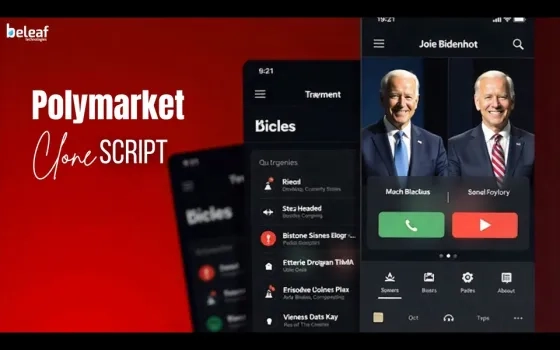Before we dive into the best business automation tools, let us take a moment to understand what business automation entails. Business automation, also known as corporate or business process automation, uses technology to automate regular, repeating operations or processes that would otherwise be done by hand.
Business automation has been the topic of numerous research and surveys, and it can provide a variety of benefits for your company.
A second global survey by McKinsey was undertaken on companies that had successfully automated business processes. The invention of business automation tools occurred thousands of years ago. Indeed, according to Inverse’s article “How Automatons Helped Predict the Future of Robotics,” the Greeks were very interested in automatons. Greek engineers produced basic robots propelled by compressed air, steam, and hydraulics as early as 420 BCE.
“…machines able to perform simple operations (like opening gates) or beautiful artifacts like clocks or mechanized dioramas,” according to Hero of Alexandria, a famous mathematician and engineer. When you consider the software and technology accessible today, it’s not exactly what you’d expect. Fast forward to 1819, when Charles Babbage, a mathematician, invented a massive steam-powered calculator.
He then collaborated on the Analytical Engine with Ada Lovelace (now widely considered the first computer programmer). The Analytical Engine is believed to be the first computer language and possibly the forerunner of artificial intelligence.
Gartner issued a new projection for low-code/no-code development tools in early 2021. Gartner predicted a 23 percent increase in the global market for this type of technology, owing to the rise in remote work due to the Covid-19 epidemic.
Low-code/no-code tools grew in popularity in the months afterward due to their ability to solve some of technology’s most challenging problems, including the critical need to digitize workflows, improve customer and employee experiences, and increase the efficiency of commercial and operational teams.
According to Harvard Business Review, low-code/no-code platforms have progressed from simply facilitating function-specific business automation tools. To allow a broader range of business employees to own their automation and build new software applications without coding while increasing organizational capacity.
No-code automation tools allow you to automate business operations without writing code. Without creating a single line of code, essential no-code tools will allow you to accomplish so. This is significant since many “no-code” automation technologies nevertheless require some coding. These are low-code applications.
What exactly is no-code?
To be more specific, no-code or a no-code tool is a programming method and movement that does not require code and instead relies on GUI (Graphical User Interface) tools. This means that no-code tools don’t rely on their users’ knowledge and ability to use code to boost productivity; instead, they use more straightforward methods.
Before diving into it, however, we need to be clear about something.
“No-code” does not always imply “no-code. “There is, in fact, code, and it was done by the individuals who created the tool. You click, scroll, or drag and drop for a more accessible and less expensive experience for the tool’s user (which is most businesses today).
The future is no code.
Ten years ago, some applications and web designs were made possible only by engineers working around the clock to make them work. In the year 2022, the developers’ task is to create a tool that will assist us in developing without code.
You’ve probably already used a no-code or low-code tool without realizing it.
If you’re a site builder, your chances are considerably better. Even if you don’t think you’ve used one, you’ve almost certainly come across one. Even the most difficult tasks, such as building a website or an app, may be accomplished with no-code technologies.
Automation Tools: No-Code vs. Low-Code
Many low-code applications will try to pass themselves off as no-code when only minor coding is required.
The main difference between the two is the target audience.
Developers utilize low-code tools, whereas business users with minor IT abilities employ no-code solutions. Low-code processes are essential components of software development processes for many developers because they are familiar with coding skills. Because business customers lack these skills, they prefer no-code products because they are simpler and faster. Low-code processes are essential components of software development processes for many developers because they are familiar with a wide range of coding abilities. Because business customers lack these skills, they prefer no-code products because they are simpler and faster.
Why use Process Automation without code?
Almost any company process may now be streamlined with suitable no-code automation technology. This type of instrument has numerous advantages in any company or field.
Advantages include
- Time to market has been shortened.
- More rapid deployment
- There is little or no disturbance.
- The learning curve is shorter.
- Greater adaptability
- Increased cost savings
A drag-and-drop interface, dynamic forms, building tools, and ticket management software, to mention a few, are all included in many no-code systems. The automation technologies are also sophisticated enough to support no-code procedures.
Using a no-code platform to automate operations improves usability regardless of its purpose. Regardless of their technical expertise, all team members will have access to the files, papers, and workflows they require. When this information is restricted to only technical users, the project’s profitability, communication, and accessibility suffer dramatically.
What can I achieve with a tool that doesn’t require any coding?
Nowadays, the opportunities available through no-code are unlimited.
You probably accomplished a lot of things without realizing it was no code. Numerous options are available, ranging from constructing a website to developing an app. You can use no-code to automate your job or home duties, manage your data, or be compensated.
Remember that time you made an internet survey? That was also no-code.
To code or not to code is the question. That is no longer the question. No-code is not limited to a single business or field of work; numerous technologies are available. It doesn’t change the reality that all no-code tools serve a purpose, regardless of the industry.
Organizations must pay attention to these topics as the shift continues and adoption rises across essential industries, from financial services to manufacturing, to optimize the effectiveness of their new tools and assure the success of their low-code/no-code initiatives.
It’s easy to see why CEOs consider low-code/no-code platforms and devices beneficial to their businesses. An organization can unlock new areas for rapid growth by allowing non-IT staff to design their business automation tools. Some executives, however, are wary.
Governance will be critical if citizen developers are given the option to create new applications. To maintain uniform levels of security across the enterprise, IT professionals will need to implement guardrails and have them embedded into low-code/no-code platforms.
Companies adopting new low-code/no-code tools should remember some of today’s most common cybersecurity best practices, such as training every employee on good security behavior and using compartmentalization and limited access to prevent mistakes.
Let’s look at various tools that do not require any coding.
- App/Website building – Hubspot CMS, Code2
- Onboarding/ Interactive guides – Memberstack
- Voice – Voiceflow
- Project Management – Airtable
- Automation – Zapier
- Analytics – Obviously.ai
- Marketing – Hubspot Marketing Hub
Conclusion
In today’s world, both low-code and no-code processes are becoming increasingly popular. Whether you’re a developer, an app developer, or a business executive with no coding experience, there’s a platform for you.
Finding the right technology to assist you in automating procedures helps improve team cohesion and decrease human mistakes. Now it’s your turn to work out your needs and objectives. Whether you require assistance with website launch or payment services, you are no longer at the mercy of developers (or rather, at the understanding of business automation tool developers).
No-code is transforming organizations, workplaces, technology, and lives. Take a look at this list of different types of no-code to see how you can profit from these tools and improve your workflow.
Source: All you Need to Know about No-Code Tools for Business Automation in 2023



























